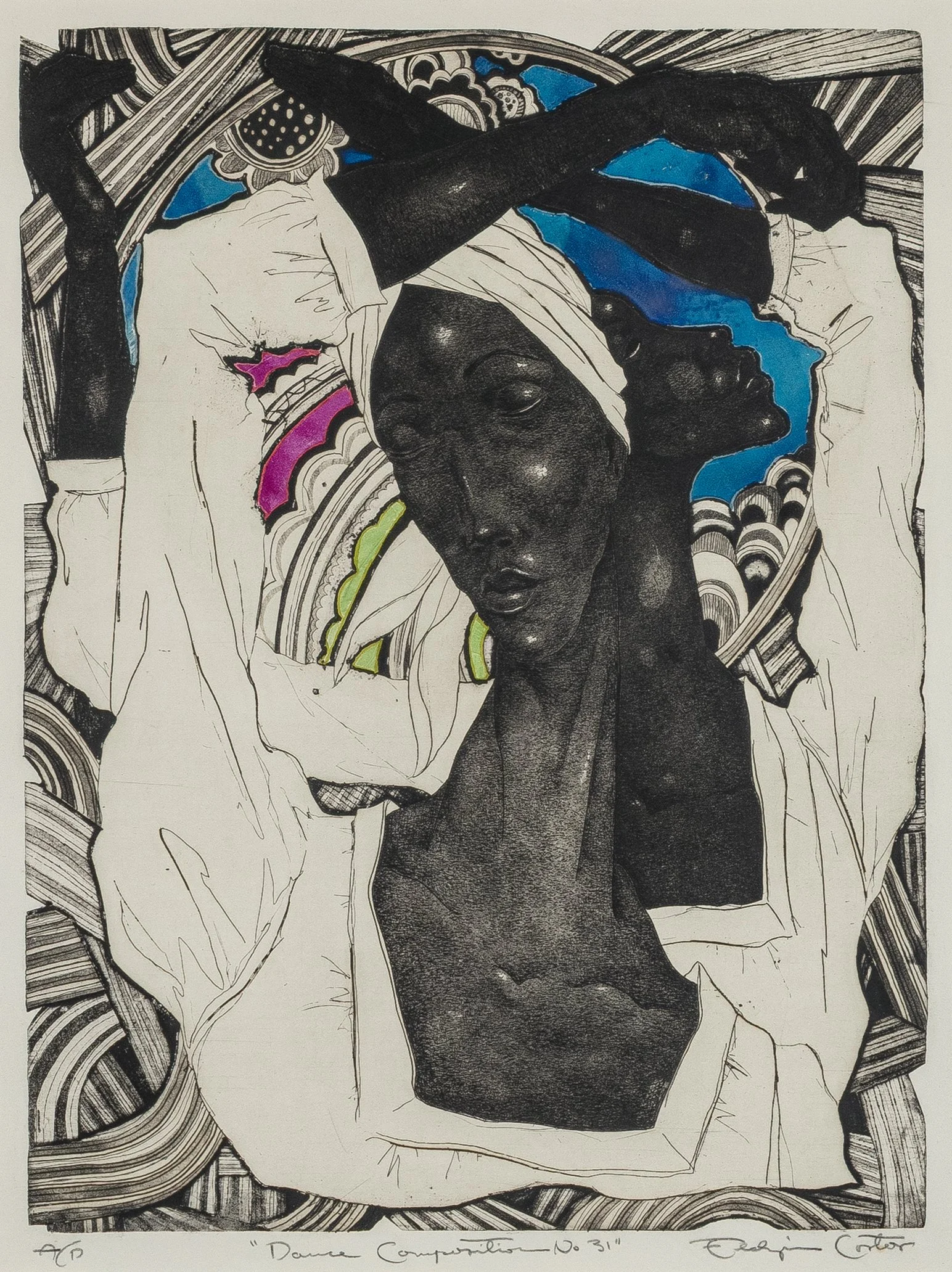
Eldzier
Cortor
(1916-2015)
untitled, Figure Composition
c. 1940
ink and watercolor on cream paper
22 x 15-1/2 inches
signed
Eldzier Cortor devoted his long career to portraying the dignity, resilience, and beauty of African American life, with a particular emphasis on the Black female figure. Born in Richmond, Virginia, and raised in Chicago, he studied at the Art Institute of Chicago, where he was first inspired by African sculpture on view at the Field Museum. That encounter shaped a modernist style rooted in African form and symbolism, which he fused with a deeply personal vision of cultural identity.
A turning point occurred in the 1940s, when a Rosenwald Fellowship enabled him to travel to the Sea Islands of South Carolina and Georgia to study the culture of the Gullah people. Descendants of West Africans, the Gullah preserved language, traditions, and aesthetics with striking continuity. Cortor was profoundly moved by the women he encountered there, later describing them as the “progenitors” of his art. Their elongated forms, central to his paintings and prints, became enduring symbols of resilience, continuity, and cultural survival.
Alongside painting, Cortor became a master of printmaking, treating it as a medium of invention rather than reproduction. He worked in etching and aquatint, combining fine linear precision with rich tonal fields; in woodcut, where bold contrasts and wood grain amplified his rhythmic compositions; and in collagraphy, which allowed him to build up textured, almost sculptural surfaces. He often hand-colored his prints, blurring the line between unique object and edition. In works like his L’Abbatoire series of the 1960s, etching and aquatint intensified scenes of brutality and endurance. In his studies of female figures, the grace of line and tonal variation reinforced his lifelong theme of survival and dignity.
Cortor’s works are held in significant collections, including the Art Institute of Chicago, the Whitney Museum of American Art, and the Smithsonian American Art Museum. Since his passing in 2015, his influence has continued to grow: his work was featured in Regarding the Figure”(2017) at the Studio Museum in Harlem and in the traveling exhibition Black Refractions: Highlights from The Studio Museum in Harlem (2019–2021). These recent presentations affirm his place among the foremost interpreters of African American experience in the 20th century.
Cortor’s legacy lies not only in the imagery he created but also in the way he used both brush and burin to translate cultural memory into art. With these tools, he blends the survival of the Gullah heritage, African form, and modernist experimentation into a body of work that is at once poetic, political, and enduring.
Photo: The artist, 1949, taken by Gordon Parks.
untitled,
Figure in Bedroom
c. 1945
brush, pen and ink on cream wove paper
11-1/2 x 8-1/2 inches
signed
Dance Composition No. 31
1978
etching and aquatint with hand-coloring on wove paper
21-3/4 x 15-1/2 inches, full margins
signed and titled, with A/P (aside from an edition of 50)
Compositional Study No III
1974
etching with embossing
21 x 16 inches (image) full margins
signed, titled, dated, and numbered 19/35
Printed at Robert Blackburn's Printmaking Workshop, New York. From a portfolio of seven etchings: Impressions: Our World, Volume I.
This image is included in the collection of the Museum of Modern Art, New York.
Sepia Odalesque I
c. 1970s
etching and aquatint on cream wove paper
20 x 15 inches (image) full margins
30 x 22-1/8 inches (sheet)
signed, titled, with A/P
untitled, Figures
n.d.
linoleum cut print
6 x 3-1/4 inches, full margins
signed, with A/P